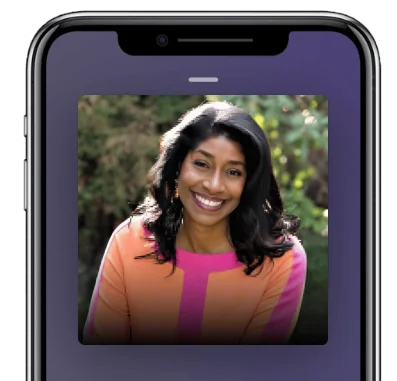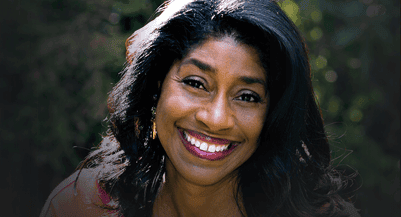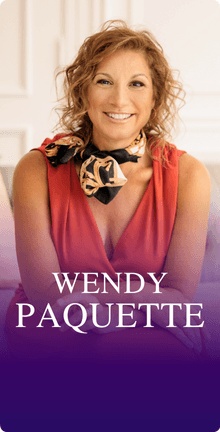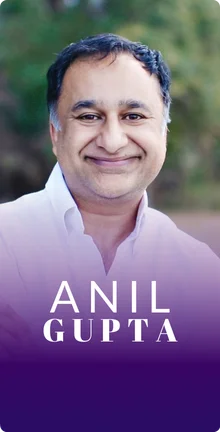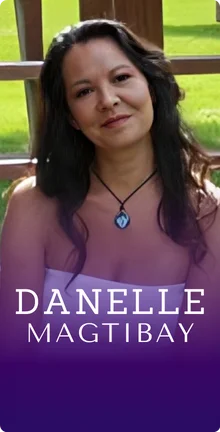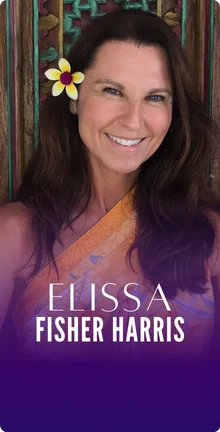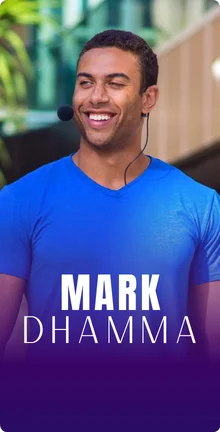In this Episode
- [01:36]How Valerie’s book has become a labor of love. It is the result of her own journey of personal transformation.
- [02:39]Valerie’s four step process that she learned from her happiness journey.
- [03:47]Waking up to the truth of who we are and living our magnificence essence.
- [04:34]Shaking up and releasing things that aren’t in alignment with our true selves.
- [05:30]Making up a new story of a higher version of ourselves.
- [05:54]Taking up the reins and living our new awakened life.
- [06:46]How Valerie had the book ready to go before she had her stroke. She uses the information and the four steps every day.
- [08:39]The story of the biggest surprise of Valerie’s life which was the stroke.
- [11:28]After the stroke, Valerie woke up 4 days later, unable to speak and paralyzed on her right side.
- [12:18]She did regain her ability speak the next time she regained consciousness.
- [14:47]How the stroke was an opportunity to welcome a more fulfilling way of living that doesn’t depend on outer circumstances.
- [15:33]Laughter can heal, keep a lightness about us and travel our journey in a lighter way.
- [17:53]How Valerie wished that she had brought spirituality into her job. Her energy was filled with things she wanted to get rid of. Things like anger, fear, and guilt.
- [19:57]She had to have an awakening and see herself through her own eyes and how other people saw her.
- [20:55]How spirituality became the pillar of how she created her life.
- [23:52]Valerie experienced heart attack systems and went to the emergency room. There was an effect on her heart that was potentially deadly. Yet, there wasn’t a diagnosable cause. This process made Valerie begin to ask questions.
- [27:27]Valerie was on a retreat and had an encounter in the woods with a buck deer and that was when she realized that she was wounded.
- [28:53]Feeling a connection at a deeper level.
- [30:10]Miracles happening one after the other after having an awakening.
- [31:49]Valerie thought miracles happened in her life all the time.
- [33:45]Wake up and realize who we are and that the biggest miracle is when we realize that we are miracles.
- [35:09]Living in harmony with the universal laws.
- [35:42]To be happier go inside and allow happiness inside of you.
- [37:20]Nonviolent or Compassionate Communication. Communicating in a way that allows love and honor through communication.
- [39:28]Heart-centered living and HeartMath tools. Studies the power that resides in the heart. There is rigorous science that underlies the organization.
- [42:09]The soul lightstyle concept is about lightening up and letting go.
- [43:16]Sacred Contracts or higher principles for living and knowing who we are at different levels. There are no accidents we are eternal beings. We have sacred contracts for those we come in contact with.
- [49:06]How feeling loved needs to come from inside us. We embody love.
- [49:48]Laughter Yoga is where laughter and yoga are combined as a practice because laughter is a healing modality. Improv is used with laughter and yoga.
- [56:08]Meditation going into the silence and unplugging and cultivating a relationship with your inner self.
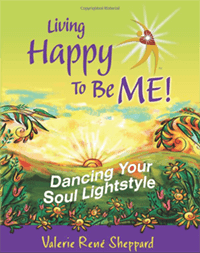
Valerie, it’s great to have you on the show.
Thank you so much, Stephan. I’m really excited to spend some time with you.
Me too. So let’s dig in. Tell me a bit about your book because I assume it’s about happiness and how to get into a better state. Please elaborate on how that book helps people and also how it’s become the center of your practice.
The book is really a labor of love. I am thrilled that you are asking about it. Yes, Living Happy to Be ME! The subtitle is Dancing Your Soul Lightstyle. It came out in June, it was published. I’m really excited about it. It is the result of many years of studying, searching and the combination of my own journey of personal transformation, things that weren’t going well in my life that I needed to transform and how to find a deeper sense, a purer sense, a truer sense of happiness, fulfillment, inner peace and then how to leverage all that stuff to create a life that’s fun to live. It’s also successful in those places that I wanted to be. It teaches a four-step process that I distilled from several different places. When I was on this journey for myself, I was going to workshops and I met with spiritual counselors. I had conversations with the minister of my church and different certified coaches and went to retreats and workshops across the host of different topics. What I started to notice was that on this question of, “How do I be more happy?” “How do I have more of what I want and less of what I don’t?” “How do I have better relationships?” I started to notice that there was a piece of the work, so to speak, that seemed to be similar across a lot of these places where I was getting information. I just decided to distill it down and I distilled it down to these four steps that I call my living happy to be me process. The book teaches that and it also has a workbook in it so that you could actually write in it and answer questions and capture thoughts and stuff like that along the way.
Cool. What are those four steps? What does it do for you?
Number one is wake up to the truth of who you are. So many people are living in a you that they think is them like this is me. I call that the lower case me. If you look at the book title, the me is capitalized, ME and that stands for what you find at step one, magnificent essence that every one of us is more than just a human being. That we are at once a spiritual being and a human being and that when we can activate that spiritual side of us, we give ourselves access to a lot of higher energies and higher abilities, intuitive sense, and miracles, and all kinds of things that we don’t access as much as humans. That’s step one, wake up. Step two is once you’ve awakened and you realize that you are this magnificent being, then you need to do step two which is shake up and release everything that’s not in alignment with that. That means all of us have these ideas of ourselves that aren’t really true, that we’re potentially unworthy, that we’re not lovable, that there are certain things that aren’t for us but are for other people. And they’re little fragments of conditioning that we’ve got usually about the time we’re 10 years old, believe it or not.
They’re still running on us underneath the surface but when we wake up that we’re much bigger than we think we are and we start getting rid of unraveling these little fragments of not truth about ourselves, then we can access a whole different opportunity for creating a magnificent life. Step three is that storytelling step. It’s make up a new story of you in your life. What are you going to be, how are you in a relationship with yourself, and how are you bringing that through you into this life and what is it that you, as this higher version of yourself on planet Earth, how is it that you’re going to have what you want, what’s that story that you’re writing anew. And then, step four is take up the reins and go live it. That basically means what do you have to do, who are the people that have to stay or go, what is it that needs to be prevalent in your life in order for this new awakening to keep going. That’s the four-step: wake up, shake up, make up, and take up.
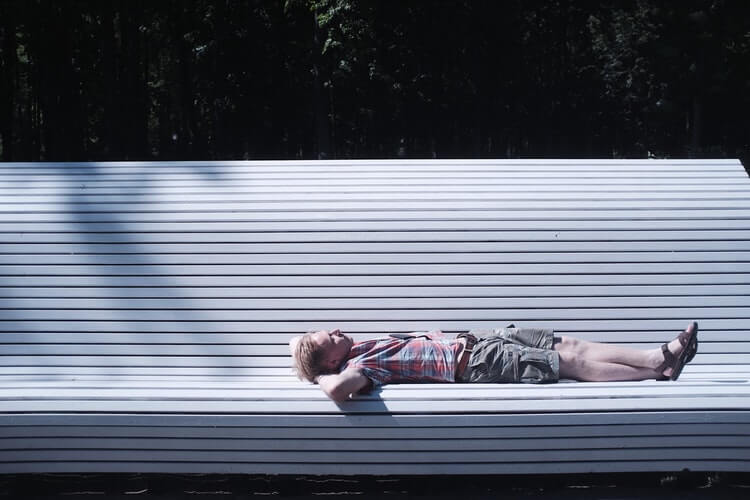
Oh, cool. I assume that you used this process on yourself. Was it through surviving the stroke and recovering from that or was it prior to the stroke? How did that manifest for you, this four-step process?
The four-step process precedes the stroke. The book actually was ready to go when the stroke happened. It was going to actually be released in August of 2015 but I had the stroke in June so the book got put on hold for a year. But yes, I absolutely used this process every day since I’ve been working with this information, this knowledge, this way of living. I use it every day. The four steps, I started noticing, so not only did I distill it from other people but with other processes and other things that I was doing but I started seeing the reason that I have and the way they are, I started seeing what worked really well for me. In the course of actually living the steps, the book came into being. It actually started, Stephan, as this free report, 30 Ways And 30 Days To Have More Happiness, Fulfilment, And Success. A BFF, really great girlfriend and I were having tea and coming up with some of these 30 ways and the more we did it, we ended up with 86 ways. I was like, wait if I really look at this, this is much more than a free report. This feels like bringing in a lot of the tools and tips that I’ve been living with so the book was born and I just worked on it from there.
Wow, you had this catastrophic stroke and you almost finished the book or you had finished the book by that time?
Yes, the book was ready to go. We were preparing for launch mode. The book was done and then I had a stroke.
Wow. A catastrophic stroke is a particular type stroke that’s very severe. Could you share with our listeners what happened for you and what your road to recovery was like?
The stroke was the biggest surprise of my life. It happened on Friday, June 5th of 2015. I was facilitating a leadership workshop for a group, the Center for Educational Partnerships here at the University of California Irvine. It was an all-day workshop. It’s about [2:00]PM or [2:30]PM, we had just done break-out sessions. Each table was working on something and we were just de-briefing it. I’m one of those speakers who like to move around the space. I was backing up from one of the tables at the back of the room where we had been reviewing what they had distilled from their table conversation and their little whiteboard. I was backing up and talking, and I walk and talk all the time. All of a sudden, my right foot would not move. I’m not sure what people around me could see. I wish I had a camera. I wish someone started filming at this moment because I’d love to go back and look at it. But whatever they saw, I guess it alarmed them a little bit because a couple of people asked me if I was okay. I said yes and kept talking. I tried again to move my foot. It wouldn’t move and I kind of lost my balance. Someone grabbed me and got me into a chair.
At that point, I realized something is going on here. I don’t know but I didn’t know what it was. The person who had arranged for me to speak said, “Do you want me to call 911 or something?” I said, “Yes.” They called 911 and when the paramedics got there, I just was feeling incredible nausea which I understand now. A blood vessel in my brain burst. I understand now that nausea comes from the blood pooling in the skull around the brain. I didn’t know that then. I just knew I was feeling incredibly nauseous and I’m sitting there getting ready to vomit and there are 60 people in this room looking at me. I’m thinking, “Please clear the room before I projectile vomit.” They did and the paramedics got me stabilized. They couldn’t move me while I was unstable. They got me stabilized and I don’t remember the ambulance. I remember getting there and I think one of the last things I remembered saying was, “Please don’t cut my sweater.” Because in the emergency room they pull out scissors and cut your clothes off. So I was like, “Please don’t cut my sweater.” They didn’t. That’s why I had buttons and they didn’t cut my skirt. I got those back when I left so that was cool. They did cut off my tank shirt. I woke up four days later. Things started to unfold from there.
At the time I awakened, I couldn’t speak and I thought my right side was paralyzed, it wasn’t moving at all. I was talking in my head and my sentences sounded beautiful. But when I looked at people’s faces, I can tell that what I was saying wasn’t making sense. I was basically kind of speaking gibberish. I remember this thought. I was like, “This is funny. I’m a speaker, a teacher, and a coach. Now I can’t speak.” And then I remember thinking, “Well, if Stephen Hawking can do it, I can figure it out.” And then I went back under and I woke up a day later, I think. My speech dropped right back in. It just showed up one day. I never went to speech therapy. I never grew upset about it or concerned about it, I cracked jokes to myself. I went back into this, I’d say coma, I’m not sure if it’s the medically correct term. I went back out, I guess, and the next time I regained consciousness I could talk. It took a lot longer for the body to come along and to learn to walk again and use my right hand and stuff like that. It’s a journey that still continues. It’s amazing to me that I went back to work when I did which was October of 2015. Four months later, five months later, I was back in the classroom teaching. I had a speaking engagement in February and I kept it. There’s been a lot that’s happened since then and the journey continues. It’s just a path like any other path. It has hills and valleys, and rests and stops and all that stuff on it like any other path.
Wow. That floors me. Not just what you went through, but the positive state of mind that you kept throughout. How terrifying that you might not be able to speak again and you’re brushing it off, “If Stephen Hawking can do it, I can certainly do it too.” Amazing.
I think there were two things that came into play there. One of them was it’s been a journey. I’ve been on this journey of personal awakening, coaching, and teaching others to embrace, to want to do it, and then how to do it for many years. I think those things were so much a part of my second nature. By second nature, I mean embodiment. It’s something that goes from the head to the heart. It’s not just head knowledge. I read a book or I went to a workshop and now I have the notes that I took, it’s really an embodiment of the expression of the knowledge. It all just unfolded with the opportunity for me to just be it instead of teach and talk about it. This can be true for anybody with any kind of situation that shows up and they go, “What on Earth is this here for?” I really believe the stroke was an opportunity for me to double down, so to speak, to use a poker term, double down on my bet on a new way of living. A way of living that’s more fulfilling and it doesn’t depend on outer circumstances to be happy, to be whole, and to be fulfilling. It is. That’s my choice. I think I was so tightly into the belief, believing, and seeing of that. That really helped.
I think the other thing that helped me which is one of the things that I still do today and that I love a lot is I’m an impromptu comedian. I have been for several years. I’m a certified laughter yoga instructor. I know that laughter can really heal to the extent that we can keep a little bit of lightness about us which is why that word is in the title of my book, lightstyle, to the extent that we can travel the journey in lighter energy, free from worry, shame, anger, resentment, and really loosen up a little and not take ourselves and our lives so seriously all the time. That we can move mountains, I think, when we allow ourselves to be a little fun. It’s not saying frivolous. That has its place too. But even in a really serious situation, how light can we be and by accessing lighter energy, I think we also access some really powerful solution energy and allow ourselves to do some pretty miraculous things which apparently my body was doing. People have called me a miracle. The more we look back on the things I was doing a month later and two months later, I was wheeled into the rehab hospital on a gurney and I walked out four weeks later after a catastrophic hemorrhagic stroke. That’s practically unheard of. There were beautiful energies and obviously love of the Divine that worked in all of it.
Yeah, certainly. It’s amazing. That’s a big departure from being some high-powered executive, a vice president at a huge billion-dollar company in charge of all these food brands. How did you go from that world to being so spiritual? I mean maybe you were just spiritual in the off hours and you were all business at ConAgra or maybe you brought spirituality to ConAgra or maybe you could fill us in on that piece.
I would love for that last thing that you said to be so true, that I brought spirituality to my working at ConAgra. Unfortunately, it’s not true. The person that I was being and the things that I was doing at ConAgra Foods are the very things that this book helped me change. This has nothing to do with ConAgra. ConAgra’s a great company, fabulous people, were parts of my teams and were all around me. This is not an indictment of them. It’s just the reality of who Valerie was at that time. That part of my life, I considered myself spiritual, but I wasn’t embodying spirituality 24/7/365. It was like I was the church lady. I would go to church and I would volunteer on certain circumstances but the energy that I was bringing as me was filled with the stuff that I was trying to get rid of. There’s anger, resentment, shame, guilt, and kind of fear. The aspects of life, you can’t outrun them. They’re a part of life but I’ve become them, if that makes sense. The stories I was telling in my head about why a person did or didn’t do something relative to me and so a person could be my boss or an employee, direct report, or could be a cross-functional counterpart or a could be guy I was dating or a girlfriend. In any of those situations, what I was responding with was old conditioning and old stories and old wounds. We all have them. The question is what’s going on with them, what are we doing with them. They were pretty loud underneath the surface of me and I wasn’t even aware of a lot of them. That’s why step one in my book in the process is wake up. I really had to have an awakening. I had to see myself through my own eyes but it helped to also really look carefully at the feedback I was getting because other people were seeing it. People would say, “You just seem angry all the time.” I would of course get angry and say, “I’m not angry. Why do you think I’m so angry? I’m not angry.”
That’s very convincing.
Exactly. But I’ve asked myself, why does this keep coming up? It’s not like I wasn’t trying to work on it so I had seen psychologists and psychiatrists. I’ve been doing my work. I’ve always been one of those people who feels like self-awareness is important to me. But I wasn’t doing it on certain levels that really unlocked it for me. That’s where spirituality went from being something I understood and did from time to time to being the pillar of my life and how I create my life. I say it in my book that I went from being a stressed-out workaholic to being much more peaceful and fun and much lighter. I still get a lot done and I still teach some heavy-duty classes and things like that. I think some people have a myth that if you soften up then you go soft. They talk about the softer side of business leadership and I just don’t believe in that stuff anymore. There’s business leadership that can be heart-centered and it’s not about being soft. It’s about self-love, self-care and how do you bring the best of you into a leadership dynamic. That’s basically the transformation that I’ve made, this driven-drill sergeant of a boss into this much more self-aware, self-accepting, comfortable, confident person who is much more compassionate.
Amazing and very grounded, very down to earth, really easy to talk to.
Oh, thank you. Thank you.
While you were talking, I remembered this quote from the monks in India. I went to Oneness University and they told me that the divine isn’t a belief but an experience. Contextually I got it, and then I experienced God while on that trip. I had this awakening experience. It was incredible. My whole life changed in that moment. After getting this blessing from a monk, it’s like I was transported somewhere else. I opened my eyes and everything was in technicolor when outside and the green that I saw for the grass and the trees and everything was the brightest technicolored green I’ve ever seen in my life. It was like a cartoon. It was surreal but then the connection I felt to the fabric of creation, it’s beyond description. My whole life shifted. Did you have a moment where everything kind of shifted for you? You were this high-powered executive, getting stuff done, taking names, all that, and then it happened and you had an awakening experience. What was that?
Wow! I really love your story, it’s beautiful. Mine weren’t quite the same but they were these seminal moments and I’ve got two of them. The first one happened back around 2006. I was still working at ConAgra at the time. I was in a meeting with my team in an office. I started having these symptoms and I didn’t know what they were. I actually asked everybody. They could tell something was wrong with me again so I was like, “Hm, okay.” I asked, “Does anyone know what the symptoms are of a heart attack in a woman?” I knew enough to know they were different than those in a man, but I didn’t know what they were. The interesting thing for me when I think back to that day was that instead of really just dealing with whatever was going on and trying to get myself help, I was in my head really trying to do this comparison. Check the data before I respond, see the comparison, and the contrast between a heart attack in a woman and a heart attack in a man. That to me was just the nature of who I was being at that time. I was very analytical and very head-centered. That was a big moment, going to the emergency room at the same hospital, as a matter of fact, that I was taken to for the stroke. But at this hospital, understanding at that moment, they could chart on the instruments that something had happened. They could see that there has been some cardiac activity that wasn’t normal. They couldn’t say it was a heart attack, but they could tell there was something going on.
Over the next two months, the diagnosis became benign super arrhythmia which basically the cardiologist was telling me, “There is nothing physiologically wrong with your heart, but something is having an effect on your heart that is potentially deadly. Super arrhythmia, your heart can speed up and slow down without any warning. They can be deadly.” They wanted to give me pills. They wanted to potentially restart my heart, the side effect of which is that it doesn’t restart. Little things like that that made me kind of go, “Wait a second, I didn’t even know that was possible, honestly, that I could have a physiological symptom that wasn’t caused by a physiological cause.” It made me start asking some very important questions, how did I get to that spot, that point in my life, whose life was I living where I had these kinds of things going on. I really started this journey to figuring out what’s my life supposed to be about? As a part of that process, so this is still before the book had started getting written, this was as I was doing an exploration and trying to free myself from whatever this was. I went on retreat. I was a member and still am a member of a Unity Church and I went on a retreat to Unity International Headquarters in Kansas City, Missouri.
You don’t have TVs in your room or radio. Your outside stimulus is really cut off. It’s really a great time to go in. I was going within, when I was taking a walk in nature which is one of my favorite places, especially to do introspective work. I rounded this hard of a path where I wasn’t able to see what was ahead of me until I got around this little corner. When I got there, there’s this huge, to me it was huge, buck. It had antlers with points and standing there, just staring at me. There was an immense amount of peace. I wasn’t like, “Oh my God!” I didn’t run away. The buck didn’t run away either. We just had this encounter and I really, up to this day, have no idea how long the encounter was. What I remember seeing, I remember looking at it in the face and I remember feeling like there was this, I don’t know, this opening where for the longest time I had been saying I have no patience for wounded people and then that instant I realized I was one. That I was a wounded person and I really have never had much love and patience and nurturing and care for myself. That I’ve been just about as hard in myself as I was on other people, I’ve never realized that before.
That’s what they say, I think is that the parts of people that you dislike the most is that there are some parts of ourselves that we don’t want to deal with.
Isn’t that the truth? I cried for like three days, even in the classrooms I was just bawling. I carried around a box of tissues. I just released this anguish that I didn’t even know existed. I had this experience of intense compassion and experience of release. I felt this connection to myself at a deeper level, connection to this energy that I call God. There’s really beauty in the world, love in the world, oneness in the world. For the first time, I believe it’s always been there so I always say none of us is broken, we just maybe have forgotten that we’re so perfect. I just remember feeling this intense love for everything and everyone and myself that really started this sense of, I don’t know, of fullness in my heart that maybe want to as my minister would say, “Return to the world with gift bestowing hands.” That kind of started the journey like, who else can I teach this to, who else can I help have this experience and see themselves as loved and lovable and just magnificent? Who else can I help find compassion for themselves so that we have more compassion in the world and that was the beginning.
Wow, did you find that miracles just started happening one after another for you once you had this awakening? For me, I had a lot of just amazing miracles happen that were beyond coincidence. For example, after I had this awakening in India, I decided to pray for somebody who I didn’t even like and who was no longer in my life. I was at this amazing event called Ultimatum and I had this divine inspiration that I could give a oneness blessing, also known as a Deeksha, that I had been taught to give in India, but you’re supposed to touch the head of the person. I didn’t know that I could do it remotely. Turns out you can. It’s called an intent Deeksha. I blessed a whole bunch of people in this process while I was blissed out including somebody that I hadn’t thought of for years, he had worked for me and I had fired him because he was talking smack about me behind my back to other staff and I found out about it and I made an example of him, I was very full of ego at the time. He filed a frivolous lawsuit against me but then I ended up settling because it was cheaper, I would’ve won but would’ve cost me more money than to just settle. Then he disappeared from my life for 15 years. Hadn’t heard his name, hadn’t seen any mention of him, nothing for 15 years and then he comes to my mind as somebody to give this blessing too. Four days later he calls me on my cellphone. That was just one of many miraculous things that happened within months of this awakening experience that I had in India. I’m curious what sort of miracles just started happening for you if any?
Interestingly enough, I always thought that I had miracles happening in my life all the time. I used to rave about the charm, the life that I live. Things just came together and people showed up. I always felt that way, which in some ways kind of allowed me to get through the tough times. I just always believed that while there’d be a miracle at some point and some really awesome thing would happen, I always had that belief. I never saw myself as a miracle, ‘I am a miracle’ did not unfold in my life until the stroke. I could see that I went to a couple of stroke support groups. I never had a relationship with it. My grandfather had a stroke when I was really young but I didn’t really connect to it. It was really amazing to see what I’ve been able to do two months after this catastrophic experience. When I was at the stroke support group, some people lost the ability to speak and five years later with speech therapy every week, they still can’t speak. It’s just amazing. There was always those things that I was recognizing, so I don’t have a before and after different experience with those except for I always thought they happened to me, I didn’t always know that I’m a miracle in and of myself for the similar things that are happening. I do believe that we’re all that, that we are all these incredible beings endowed with so many abilities that we often don’t realize. I start to think that one big miracle that can happen for each person is that when they do that wake-up, when they do just ‘wake up’ and realize who they are, what they are, and how the world is really working for them and things are happening for their eyes, nothing’s really happening to them.
We are all these incredible beings endowed with so many abilities that we often don’t realize. Share on XTony Robbins says, “Life happens for you, not to you.” I definitely believe that. That was a great profound statement that you made that, “I am a miracle.” It’s a big distinction from I have miracles happening to me all the time or for me all the time to than I myself am a miracle.
What I like about that, I think why the four steps are important to me to live them and also to teach others is the law of attraction. The movie The Secret I think took the law of attraction kind of mainstream. I don’t know if anything before that that made it so normal let’s say, to talk about this kind of spiritual law of attraction. There are many more laws, they’re in operation 24/7/365 and the way we have a really beautiful life is to live in harmony with the laws so that’s one thing. But living in harmony with the laws of attraction, laws of reflection, laws of karma, law of gratitude, all of that is about being it, not just thinking about it. Making a vision board is a way to activate it but that’s not it. The “it” is when inside you, inside me, I am so embodying, so connected to and so therefore expressing that aspect that it can show up on the outside. Life is an inside-out game. If we want to be happier, we have to go inside and deal with what’s not happy there in order to allow more happiness to come through us. The idea of being a miracle, to me I would tell you this, Stephan, I rejected it. It was hard. I sat in my room at the rehab hospital and when people would say that, I could feel my chest tighten up. I rejected it for a while. I’m unworthy of that word. It’s too big a word. It carries too much energy and I’m not that. At some point, I don’t know what that point was, I can’t call it out in time, it just felt normal and appropriate and real to trust that that’s exactly what I am and to allow myself to feel that and express it. Like I said earlier, opening up to it, it’s there and just being an open vessel to receive. I think that’s allowed it to be there more prominently and therefore to attract.
Let’s talk some more about some of these modalities that we’ve just brushed over a bit like Improv, laughter yoga which I actually experienced in India as well. It was a lot of fun. You’ve also studied HeartMath and compassionate communication, sacred contracts, let’s dig into some of these. What are some of your favorites? Let’s start there.
I love non-violent communication. I think they’ve transitioned it to be called compassionate communication more these days but either way it’s the same thing. It’s about being able to communicate with another in a way that honors and respects oneself while honoring and respecting and actually carrying love energy for them no matter what they’re saying. I teach it in my class here on campus. I haven’t gone and studied it to the extent of getting a certification in it, but I do practice the principles so I teach my students the foundational principles of it and then we role model it in class. If somebody is saying something, we get into a space within ourselves where we’re willing to allow them to have an experience, even an experience of us that isn’t exactly what we would like and that we are willing to, without anger and judgment and blame and shame and guilt and punishment and all those things that are often underneath our communication to be able to have a conversation about it. I love it.
I studied a bit on non-violent communication, NVC as well. Marshall Rosenberg, the founder of NVC said something really profound and I love which is should is the most violent word in the English language.
Yes, people are shoulding all over themselves, all the time. Yes. It’s part of our conditioning that conditioned response or engagement that we have with ourselves and with the world.
Non-violent communication or compassion communication, that’s definitely something our listeners should look into more, it’s amazing. What else? What are some other modalities?
My company’s called The Heart of Living Vibrantly Center for Mindfulness and Self-Mastery, the book Living Happy to be ME! My logo has the heart on the center of it. It’s all about heart-centered living and for me with that I’ve built into my practice Heart Math tools. Heart Math is an organization that’s been around for decades. They study the power that resides in the heart. Yes, my brain loves heart math because they are some very rigorous scientific studies that underlie what the organization teaches. They basically teach how powerful the heart is. Not necessarily in comparison to the brain, they don’t only focus there. It happens to be way more powerful than the brain as a guidance system and an intuitive intelligence system, but they go beyond that. The heart in and of itself, compared to the brain and how powerful it is when we leverage it especially in the West where we’re often taught that the heart is only for romance and the head is how you get ahead in business, the head is how you get your degree and you get your doctorate.
We rely on the brain for so much. Heart Math teaches that the brain actually should be working in support of, in consort with, as a servant to the heart. Albert Einstein said it like this, “The rational mind is a servant and the intuitive mind is a sacred gift. We have created this society that worships the servant and has forgotten the gift.” And that is so true. I am teaching this on a university campus, a top-ranked university, and trying to help young people get out of their heads and understand that there’s a time and place for all aspects of us. But leveraging the heart and becoming a heart-centered leader and what does that really mean and putting that into practice in all aspects. Personal leadership, meaning leading myself in my life, and then leadership of others or high-performance team leadership which is how do I take myself as a leader into other environments. Heart Math is a must have, it’s a must do, it’s a must be heart-centered.
How does this tie in with the soul lightstyle concept?
Soul lightstyle concept is about letting go, lighten up and let go. It’s about letting go of, you said about a minute ago, all the shoulds. Half the time when I ask people why do they feel pressured by something and I’m like where does the pressure come from? Some people know, they are very aware that it’s coming from them, but other people don’t know. I’m putting it on myself. The lightstyle is part of that letting go of the shoulds. It’s also releasing from yourself all the things that block you from feeling the miraculous nature of life. From connecting to your heart in a compassionate, tolerant, loving, and I’m talking about unconditional love not romantic love, in an unconditional loving way for yourself and for others. To the extent that Heart Math teaches very specific tools that help people release themselves from the negative in themselves, it’s all related.
The sacred contracts, I guess you’re a certified coach in that?
Yes. I went to the Caroline May’s Educational Institute, CMED. Caroline May is a medical intuitive, prolific author, a teacher of higher principles for living. I got certified in this modality which is all about knowing who we are at different levels. Sacred contracts, the foundational principle under sacred contracts is that there are no accidents in the world. That we are beings that are actually eternal and immortal and we are incarnated into these physical bodies, these earth suits. We actually come into contact with people that we may have created a contract with. That we are here in each other’s lives in this particular time and space to unfold each of us into a higher level if we allow it. Being certified in that sacred contract steals with archetypes. Archetypes are sort of like a system of looking at ourselves and understanding ourselves and other people. There can be a mother archetype. A man could have a mother archetype, a woman who has never had a child could have a mother archetype. Actually women who’ve had children are actually physiological, biological moms, can be very low in the archetype.
The archetype might have some characteristics. The mom archetype might be incredibly nurturing, may take care of things, may do certain things that are specific to the mom archetype and anybody can have it, and anybody can have it as a very driving force or as not a very driving force. And so, in the course of archetype of coaching, we’ll look at what are the archetypes that are really driving someone and how might their relationships be showing them some things that are happening for their highest good, little miracles that happen in their life and how are there some sacred contracts unfolding. You’ve probably heard there are management philosophies that say, the person that you’re having difficulty with is an area that’s happening just for you to give you some growth. Kind of what you said a little while ago, the things that you hate most are showing you a place where you can grow yourself. It’s the same principle with sacred contracts that sometimes, it’s not the person we’re supposed to have so we think the love relationship means, “I’m supposed to have this person in my life.” Maybe what the relationship came to give you was an opportunity to experience and express according to these archetypes. And then once you’ve done that and gotten what you could learn from it, the relationship can dissolve and go away and you could move on. It’s kind of this idea of what’s happening between two people and how is it actually beyond this world.
You could have, for example, gone into a sacred contract with your child before either one of you were born that your child would have some sort of tumultuous issues growing up and that this will be part of the journey that you’d both go on together and you guys went into that contract before you incarnated.
Exactly. And you know how it can come up, you could see it very easily is when you meet somebody. Whenever I meet somebody and there’s such an affinity so fast and it goes so deep I feel like I must know them from somewhere but I can’t place it. That’s when I start to go, “Okay, this is probably a contract that’s showing up. There’s something we’re supposed to be for each other that is going to enable us to spiral even higher into the truth of who we are and to live our purpose at a very high vibration. I really actively look for those without putting it onto a relationship because not every single relationship is that. But definitely the parental-child, there is a sacred contract there. I know, for example, my father, I would have described him as somewhat emotionally unavailable to me. He was a military captain, very much in the command control style. And as a child, I felt somewhat abandoned. He was not there. He was a Vietnam veteran so he was gone a lot. There were things that I took away from that relationship that made me feel less than lovable. What I know now with the wisdom that I have now is that was actually a contract. One of the most important and powerful things I could go through is to realize that I am inherently lovable whether I felt it in the relationship with my father or not.
That command and control structure and way of relating showed up in your life when you were at ConAgra, it sounded like.
It showed up in my life every day. Before then too, it showed up all in my career, it showed up when I played soccer, it showed up when I was the captain of the cheerleading squad, it showed up in every leadership role I was in because that was the conditioning I had. I had a belief, subconscious to me, I didn’t know this was my belief at the time but that’s the way I got recognition, accolades. That’s the way I let people know that I was worthy of their affection, or the promotion, or the raise. But what I was really after was to feel loved and now I know that feeling of feeling loved never ever really can come from outside you. It really is a from me to me experience and the rest of the world just reflects that.
On an even higher level, it’s not just about the feeling, it’s about the beingness of it. You are love, you embody that. When that just emanates from you, then it’s not so much about receiving it or giving it, it’s just who you are and how you show up in the world. Awesome. Let’s talk a bit about laughter yoga because I bet a lot of our listeners have not heard of this before.
Laughter yoga is so much fun. It was created in Mumbai, India by a Bollywood actor who is also a medical doctor, who was also a master yoga teacher. His name is Madan Kataria. He had been studying laughter as a medical doctor. Laughter’s been studied for decades for its healing abilities. Many people in the U.S. may know of the guy Patch Adams and that movie. There’ve been lots of different things that represented how laughter could be used as a healing modality. Dr. Kataria wanted to see if he could combine laughter as a practice like go do it and have people healed. He started a group just living in a park and laughing. The way they were laughing though is they were telling jokes. that worked really well for a while except after a while, he ran out of jokes and also there was this phenomenon of kind of one person’s joke, really funny, is another person’s offense. Not all jokes are funny to everybody who hears them. He went back to the drawing board and he called on his acting ability, his acting experience. In acting, we do this thing called improvisation.
We just go with the flow, we envision things, we act out things, we do scenes, we make things up. He decided, “I’ll refine this and I’ll combine just mirthful laughter which is also known as laughter for no reason, with these Bollywood kind of let’s go do a scene improvisation. We’ll bring in some of my yoga teachings of pranayama breathing and movement and stretching.” He combined it all together and laughter yoga was formed. Now it’s practiced by thousands and thousands of clubs all over the world. I actually can get on at [8:00] in the morning, specific time for half an hour of laughter, group call, people call from all over the country and all we do is laugh. There is no talking ‘til we finish the 20 minutes of laughter and then we introduce ourselves and stuff. But I also teach classes where we get together and laugh. It’s an hour-long class. We play games and do improvisation and do breathing and stretching and we close with a 10-minute meditation. It’s one of my favorite practices.
What would you tell somebody who says, “I’m not that funny and I don’t think things are funny especially if it’s not a funny joke or whatever. I can’t force myself to laugh or whatever.” What would you tell to somebody like that?
We would say fake it till you make it. Laughter is contagious. The interesting thing about the quality of the body, this is one of those miraculous things. The body can’t really tell when you’re faking it or when you’re doing it for real. The body’s experience of the benefits of laughter are there whether you’re just going ha-ha-ha-ha-ha-ha-ha and you keep doing that. Interestingly enough, there are times when I do laughter yoga or I get on the laughter call and I do not feel like it. I don’t feel like being there, I don’t feel happy, but in the course of just do it until it comes, until it shows up. The energy gets created. I would tell somebody, “Allow yourself to experience the other people around you expressing their laughter and see what happens in you.”
Maybe take an Improv course too to loosen up.
Maybe, although I will tell you, as an improviser who’s done it in professional situations, Improv didn’t loosen me up when I first started doing it, it’s a high stakes game and it was pretty stressful for me. It can be, depends on who the person is who’s doing it, a lot of people have no trouble but for some people it can actually be the reverse of lightening up.
My understanding of Improv is there’s just one rule and that’s yes and, you don’t disagree and poo-poo anything that somebody else and crazy thing that somebody proposed to you. You just run with it and take it to an even greater extreme.
That, yes and, is the essential nature of powerful improv. But there are other principles and rules of engagement that make really great improv, really great improv. But yes and is definitely very important. It is the centerpiece. Most people don’t understand what yes and is and I actually do a talk on leadership and life lessons from improv comedy. Yes and, I also called releasing resistance. It’s the way that we move to a place of accept, allow and receive whatever’s showing up in life and not just in the scene but in life. I really do believe that that refined sense of that yes and and releasing resistance showed up the day I woke up at the hospital and couldn’t speak. The ability to go to whether I made a joke about Stephen Hawking or whether I just went back to sleep, for me that was the epitome, the way of unfolding. That was the epitome of a yes and. Okay yes, I’ve had a stroke, yes I cannot speak, yes I cannot walk, and now what?
That’s a powerful way looking at it. Improv is a really amazing thing to go through as well. Any other modalities that we want to discuss in this episode for our listener’s consideration to incorporate into their lives?
Yes. My number one, number one practice for this how do you live a magnificent life is meditation. It’s going into the silence. It’s unplugging, getting away from computer. It’s this whole sense of cultivating a relationship with the inner self, with your inner sanctuary. Cultivating that as your sanctuary the same way you might make a really special place in your room. There’s an inner house of you that is waiting for you to come visit, and to come visit often. I believe that the meditation in my life has given me a much greater understanding of how big and how beautiful and how powerful a being was you, a being I am, and has helped me connect to the energies that we talked about, the oneness, the energy of compassion, self-compassion, the energy of unconditional love. All of this stuff, if life is inside-out. That suggests or gives us a reason, impetus to create the inner self as the space of peace, love, joy and freedom so that we can experience that on the outside. I would say if you are not meditating, start a minute. You can just close your eyes. I ask my students to just close their eyes and then 30 seconds later I ask them to open their eyes and then I say, “Did anybody notice a difference?” It’s almost unanimous. Something happened just at the closing of the eyes we’re saying to ourselves, what’s out there is no longer as important as what’s going on in here. Over time, the more you practice, the greater the experience. I’m not going to say I don’t think people get better or worse at it, you just do it, it’s that kind of experience.
Is there a particular type of meditation that you gravitate towards? There’s mindfulness meditation, there is a great episode on this podcast, I interviewed Jonathan Fields and we talked about mindfulness. He’s the host of the Good Life Project podcast, amazing guy. Listeners, be sure to check out that episode, that’s amazing. There’s mindfulness meditation, there is transcendental meditation, there’s a bunch of different ways that you can meditate. You can walk while you’re meditating, you can do these what are they called? Labyrinths or whatever.
Labyrinth, the walking meditation is called Japa.
There are lots of different ways of meditating. Is there one in particular that really speaks to you or one that you recommend our listeners try out?
I am trained in transcendental meditation and I do that. I also just do all of the above. I’ve done mindfulness meditation. I’ve done all of the above. What I say to people is, “There’s no such thing as too much meditation as far as I’m concerned. Experience as many of the practices as you can to know what works for you and so that you can, depending on the time and the situation and what resources are available to you, you have different things that you can avail yourself of, different practices can help you in different situations.” I’m at the point now where I can meditate with my eyes open. It’s just an inward journey that I love. I love that walking mindfulness meditation, that’s one of my favorite things to do. There’s a park near my house that overlooks the beach and that’s one of my favorite things to do at Pines Park. Just go there and be in relationship with myself and the broader universe. But the whole point is do it, do it. I also do Mantra meditations. I use a Mantra to center my mind. In a 20-minute meditation or 30-minute meditation, I might only say the Mantra for the first two or three minutes, I usually do that on a particularly busy mindy day when I got a lot going on and my mind wants to wander all over the place. I just let it know that, “No, we’re actually going to do this now.” I’ll pull in a Mantra and sometimes it’s just, “I am grateful, I am grateful, I am grateful.”
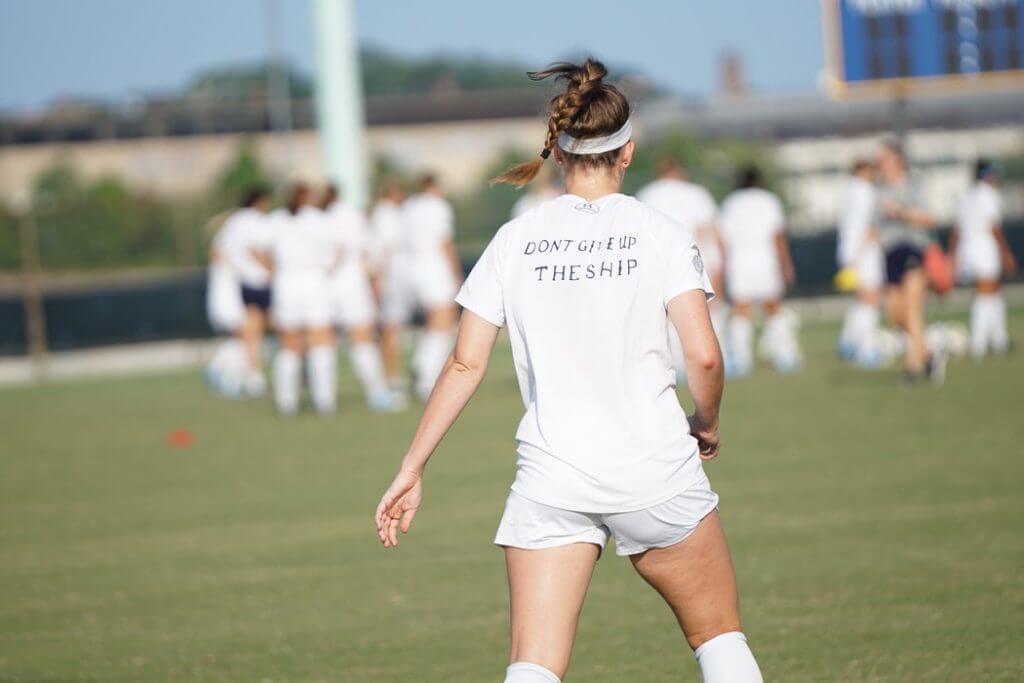
Were you given a Mantra by a guru?
Yes.
I was too, Amma the hugging saint gave me mine.
That’s pretty amazing.
I don’t do it every morning but some mornings I’ll do 108 repetitions of that Mantra.
I have my mala and I have a meditation chair and I will sit there and I do several different meditations for different reasons. I get them from a sanskrit book on healing Mantras, I use them from time to time with my mala and do 108 repetitions as well.
A mala looks like a rosary of beads, there are 108 beads. The mala that you use, is it made of a rosewood, or what is made of?
I have a couple, I’ve got a sandalwood one that a friend brought me back from India and I have one that is made with semi-precious stones and it’s a chakra mala. They’re in the different colors of the chakras. I have another one that is, I’m not sure what it is but it’s a really dark, it looks like cherry, really beautiful, dark wood. I’ve got one of these little beads, they’re actually seeds and they’re strung together with moonstone. I’ve got several different ones.
The other one I use, I got from Amma had blessed it. Do you know about Amma the hugging saint? There are millions of people who have gotten hugs from her and had amazing transformational experiences just getting a hug from her.
I have seen her. She was here in LA a few years ago. I went and saw her but I didn’t get to hug her, that wasn’t the day or something like that. I didn’t have that experience of her but the rest of the experience is pretty amazing.
How do we work with you if our listeners are compelled to maybe get coaching from you or somehow work with you, hire you as a keynote speaker or whatever? How do they work with you?
That’d be awesome, it’s really easy. You can just go to the website which is happytobeme.net. There’s a contact us, you can connect with me through the website. There are also speaker accolades and coaching accolades. You can watch videos of me talking about the book and talking about happiness and things like that. That resource is there and it’s also a great way to get in touch with me. If you want to go more direct, you can just email me at va*****@*********me.net.
Awesome. Thank you so much, Valerie. Thank you, listeners. It’s such a joy to get to interview such amazing, inspiring people such as Valerie. I hope you, listeners, are getting a lot out of it as well. This is Stephan Spencer, signing off. We’ll catch you on the next episode.
Important Links
- Valerie Sheppard
- Twitter – Valerie Sheppard
- Facebook – Valerie Sheppard
- LinkedIn – Valerie Sheppard
- Va*****@*********ME.net – Valerie Sheppard
- Living Happy to Be ME!
- Oneness University

